Artland magazine special edition featuring 14 Dutch art collectors
Collecting art is a personal journey which each collector navigates differently. However, all have one thing in common: the joy of sharing the fruits of their journey with likeminded.
To bring some of these captivating stories to life we have compiled fourteen interviews with Dutch art collectors, whom are all different but equally passionate about sharing their personal collector journey.
Meet Nadine van den Bosch!
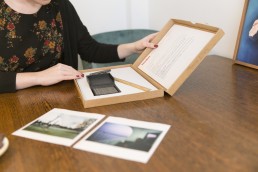
Mitch Epstein, Cheshire // Alex Webb, Istanbul // Navid Nuur & Jorien de Waard
Name: Nadine Van den Bosch
Location: Amsterdam
If an artwork causes friction, it has caught art collector Nadine van den Bosch’s attention. She always trusts her gut feeling and continuously seeks to challenge her perception of art, which keeps developing for every new artwork she adds to her collection. For Nadine, there is nothing more contagious than the enthusiasm of buying art. She hopes that the future of the art world will be a lot more about participation and sharing, so that more and more people will be able to experience the joy of art and, ultimately, collecting it.
Photos by Saffron Pape
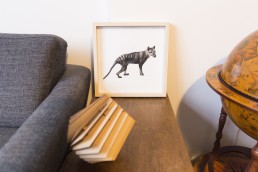
What is your earliest memory of art, and what led you to start collecting it?
I do not recall one defining moment, but I think art has always played an important role in my life. Artworks are not just objects that are merely designed to please your eyes, but also have the power to visualize ideas, thoughts, and ideals. I have always found art pleasant and inspiring, because you get in touch with new ideas and different perspectives.
I did not begin to buy art with the intention of starting an art collection. I think it is an organic and ongoing process – I bought a few small pieces that I loved, and after some time, I realized that it could be considered as a collection.
What is the main motivation behind your collecting?
For me, there are several reasons to buy art. First of all, it is a very personal selection; If you see an artwork that touches you, challenges you, or simply mesmerizes you, you know it is something special. I think you should always go with your gut feeling. If you cannot stop thinking about a work you saw, do not hesitate and just go for it. Aside from the fact that it is inspiring to surround yourself with artworks in your home, it is also a collection of memories. Because you see the works of art in your home every day, they really become a part of your daily life. I not only enjoy having the pieces themselves around me, but that they are also connected to memories and associations. Every piece has something in it that evokes a memory, making my artworks like a very personal timeline in which each work stands for a particular moment. Another motivation to collect art for me is to support artists. I think it is highly important for collectors to realize the positive impact they can have within the art world. By buying art, you not only support the artist financially, you also become an ambassador for them. By showing the work to other art lovers, posting about your acquisitions on social media, or becoming a regular at the gallery you bought the work from; all of this contributes to a healthy and vibrant art world.
Is there a unifying element in your art collection?
I do not go looking for art with the underlying idea that it has to blend in with the rest, and I do not start with a theme or medium in mind. What appeals to me is art that causes friction – art that you have to look at twice and that you may never figure out why you like. If an artwork keeps challenging you, you know it is the right one.
I do not select work for purely aesthetic reasons or only because I like the idea, for me it always has to be a balance of both. It must be interesting to look at – either because it is very beautiful or very ugly, or because it is an odd image, because it grates or irritates. In short – it needs to intrigue. I will never buy a piece just because it is a pretty picture. For me, the artwork is the end result of an entire process that went before it.
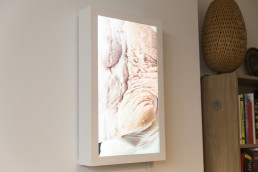
Mickey Yang , Who’s Zoomin Who
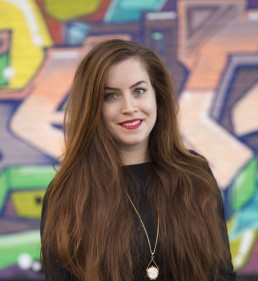
Is there a piece in your collection you have a particularly strong attachment to?
I love all the artworks in my collection, and have particular memories attached to each one. What I like most about the collection, is that you are able to make small presentations in your home. By combining several artworks, which are linked through concept, material, or medium, you create new contexts and see the works from a different perspective. For example, hanging a video work next to a classical painting can change the way you perceive the works and bring out the unique and defining elements in both works.
How important is it for you to meet the artist behind the artwork?
I always try to meet the artist when I buy a work of art. Of course, it is most important that you really like the work itself, but hearing the artist talk about his or her work absolutely adds an extra layer. I would definitely recommend getting in touch with the artist and talk about the work. Try to arrange a studio visit with the artist, this way you also get a peek inside the process of creating the work.
Are there any particular artists who play a significant role in your collection and whose development you have followed closely?
I follow the careers of all the artists I have bought work from. I believe it deepens and broadens your view on the work if you know more about the entire body of work the artist has created. When you have seen more works by the same artists, from different periods, you often start to see certain themes that reoccur or a shift in the use of materials. Such artistic developments are very interesting to see, and can add context to the works you already have in your collection. I personally like to buy work from young, emerging artists: Not only to support them at a crucial stage in their career, but also because this way I can follow their work from early on and see how their artistic practice develops.
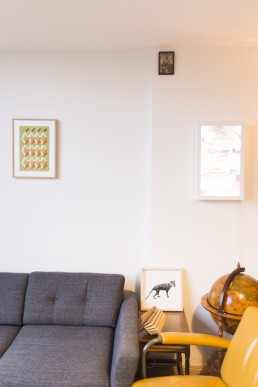
How has your taste changed since you started collecting?
Like most collectors, the first pieces you buy are often not too big, not too bold, and not too expensive. However, the more works you have seen and bought, the braver and more explicit your choices are. You dare to pick works you maybe would not have chosen a few years back. Learning to trust your own taste and your own choices increase with every new work you buy. I recently purchased a video work that I would not have imaged buying a few years ago. I think the more you collect the more personal your collection becomes.
How is the online art market evolving according to you?
The online art market is especially interesting for discovering new artist and new works. You can easily browse different works and stumble upon things you would not be able to see in real life, for example because of logistic reasons. Browsing art online breaks geographical barriers and makes it easy to see so much more art. However, this also means that you often find yourself ‘scanning’ works, instead of really paying close attention to it. To really get the feeling of an artwork, I have to see it in real life. Another downside to only viewing works online, is that you often set strict perimeters for yourself in what you would like to see. Because of these limitations – which are necessary to set for yourself in this incredible amount of artworks you see online – you take away the surprise of seeing works you would never pick yourself but that nevertheless amaze you.
In your opinion, what is the role of an art collector in the making of art history?
As I mentioned briefly before, I think as a collector you should be aware of your role in the art world. By buying art, you are not only improving your own living space by hanging a new work on the wall, but you are also contributing to the development of the artist. You can support artists by buying their work, but also by making their work visible: Open your collection to others, invite other art lovers over and share your acquisitions online. In addition to just sharing the works, I think personal stories in which you explain why you have bought a certain piece are important as well: Nothing is more contagious than the enthusiasm of buying art.

Jaap Scheeren, Untitled
Where do you think the future of the art world is headed?
I hope and believe that future of the art world lies in participation and sharing. Bringing together different players in the art world, such as collectors, artists, museums, curators, and galleries, the art world will get more transparent and more dynamic. By sharing your thoughts and insights with other art lovers, you create a new network of people who support and participate in the art world.
Describe your collection in three word
Diverse. Refined. Distinct.
Top three pieces of advice for new collectors
1. Really take the time to view a lot of art. Do not limit yourself to museums and galleries either, but visit project spaces, graduate shows, and artists’ studios as well.
2. Do your research: Read about the artist, arrange a studio visit and talk to the gallerists.
3. Buy what you love: If you see something you really like, go for it!
Top three art destinations
Amsterdam, Berlin, and the Istanbul Biennial.
Three inspiring artists to watch
Mickey Yang, Navid Nuur, and Ola Lanko.
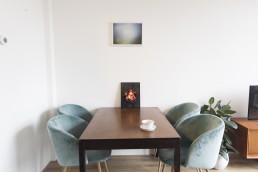
Katja Mater, No title // Elspeth Diederix, Fire still Life
